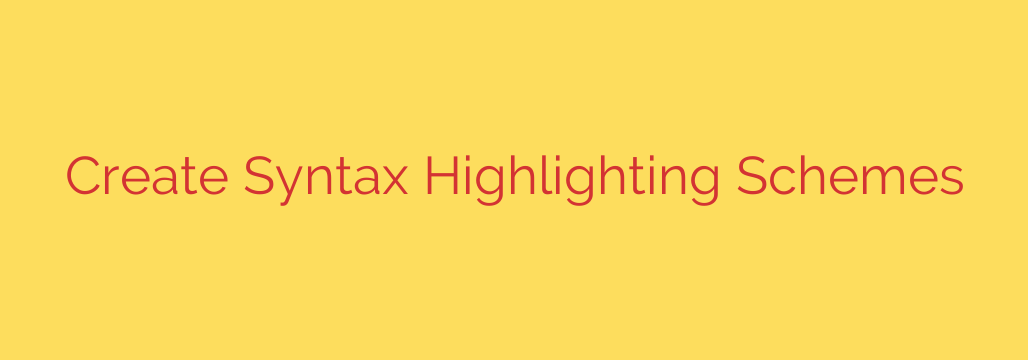
Mastering your coding environment is key to productivity and clarity. One of the most impactful ways to personalize your workspace is by creating your own syntax highlighting schemes. This process allows you to define exactly how different elements of your code appear, making it easier to read, understand, and debug.
At its core, a syntax highlighting scheme is a set of rules that map specific patterns in text (like keywords, comments, strings, or variable names) to distinct visual styles. These styles typically include properties such as color, font weight (like bold or italic), and sometimes underline or other text decorations.
To create a scheme, you first need to identify the different types of tokens or scopes you want to differentiate. Common examples include:
- Keywords (e.g.,
if,for,class) - Comments (single-line or multi-line)
- Strings (text enclosed in quotes)
- Numbers
- Function names
- Variable names
- Operators (+, -, *, =)
- Punctuation (braces, parentheses, semicolons)
Once you’ve defined these scopes, the next step is to write rules to identify them within your code. This is often done using regular expressions (regex). Regex provides a powerful and flexible way to define patterns that match the structure of different language elements. For instance, a rule for keywords might look for specific words preceded or followed by word boundaries, while a rule for strings would match text enclosed within quotation marks, handling escaped characters appropriately.
After defining the patterns, you associate each scope with a set of styles. You choose the colors for the text and background, decide if the text should be bold, italic, or regular, and apply any other desired formatting. This is where you infuse your personal aesthetic into the editor, creating a comfortable and visually efficient coding environment.
Most modern code editors and integrated development environments (IDEs) support custom syntax highlighting, often through configuration files (commonly in formats like XML, JSON, or proprietary formats) or dedicated theme editors. The process usually involves creating a new scheme file, defining your scopes and rules using the specified format, and then applying your new scheme within the editor’s preferences.
Developing a personalized highlighting scheme isn’t just about making your code look pretty; it’s a functional choice that enhances readability, reduces eyestrain, and helps you quickly spot syntax errors. By taking the time to tailor your environment, you build a more effective and enjoyable coding workflow. It’s a powerful way to make your editor truly yours and optimize the visual flow of the code you interact with daily.
Source: https://www.linuxlinks.com/schemes-create-syntax-highlighting-schemes/








